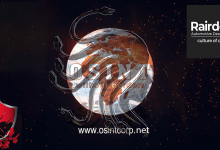Learning from Mistakes: A Comprehensive Review of Incidents and their Impact on Organizations
Learning from Mistakes: A Comprehensive Review of Incidents and their Impact on Organizations
Mistakes are an inevitable part of human existence, and organizations are no exception to this rule. While mistakes may seem like a setback, they can actually be valuable learning opportunities. By examining incidents and their impact on organizations, we can gain insights into how to prevent future mistakes, improve processes, and foster a more resilient organizational culture.
Incidents can vary in nature and severity. They may range from small, inconsequential errors to major crises that pose a threat to an organization’s reputation, operations, or even its very existence. Examples of incidents include product recalls due to safety concerns, data breaches that compromise customer information, or workplace accidents resulting in injuries or fatalities.
The impact of incidents on organizations can be far-reaching. Financial losses may occur due to legal fines, compensation claims, or reduced customer trust and loyalty. Reputational damage can lead to a decline in market share and the loss of key stakeholders, such as customers, investors, or business partners. Incidents can also impact employees’ morale, productivity, and job satisfaction, further hindering an organization’s overall performance.
However, incidents should not be viewed solely as negative events. When properly analyzed and addressed, they can serve as catalysts for positive change. By learning from mistakes, organizations can identify weaknesses, improve processes, and implement preventive measures to avoid similar incidents in the future. This continuous improvement approach, often referred to as a learning organization model, ensures that mistakes become valuable opportunities for growth and development.
One crucial aspect of learning from mistakes is conducting thorough incident investigations. These investigations aim to determine the root causes of incidents and identify contributing factors, whether they are related to human error, system failures, or organizational deficiencies. By examining incidents in detail, organizations can gain a deeper understanding of the vulnerabilities within their operations and make informed decisions on how to address them effectively.
Learning from mistakes also involves fostering a blame-free and psychologically safe environment. When employees fear repercussions for their mistakes, they are less likely to report incidents or share valuable insights gained from the experience. Instead, organizations should encourage open communication, where individuals feel comfortable discussing errors, sharing lessons learned, and proposing improvements. This creates a culture of continuous learning and improvement, enabling organizations to react swiftly to potential risks and adapt to changing circumstances.
Moreover, sharing the lessons learned from incidents is crucial. This knowledge sharing process allows organizations to prevent similar mistakes from occurring in other parts of the organization or in other organizations altogether. By disseminating best practices and lessons learned, companies can contribute to industry-wide improvements, ensuring a safer, more efficient, and more reliable business environment for all stakeholders.
Learning from mistakes requires a mindset shift within organizations. Rather than viewing incidents as failures, they should be seen as opportunities for growth and improvement. By embracing a proactive approach and investing in incident analysis, preventative measures, and knowledge sharing, organizations can create a culture where mistakes are valued as valuable stepping stones towards success.
In conclusion, incidents and mistakes are an integral part of organizational life. However, the impact of incidents is not solely negative. By conducting thorough incident investigations, fostering a blame-free environment, and sharing lessons learned, organizations can transform mistakes into catalysts for positive change. It is through these continuous learning processes that organizations can build resilience, enhance their performance, and create a stronger foundation for future growth and success.





Magnificent beat ! I would like to apprentice while you amend your web site, how can i subscribe for a blog site? The account aided me a acceptable deal. I had been tiny bit acquainted of this your broadcast provided bright clear idea